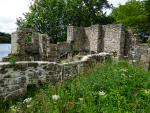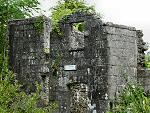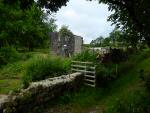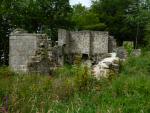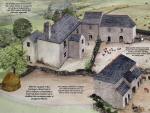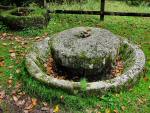The ruins of Longstone Manor lie on the banks
of Burrator reservoir at the
beginning of a small peninsula to which it gives its name, the Longstone
peninsula. The site was abandoned in 1897 as a consequence of the construction
of Burrator Reservoir which began in 1893. The house was in good repair
at this time but after the site was abandoned the roof was removed and
most of the east end stone walls were robbed out. The ruins have had some
masonry consolidation carried out to stabilise the walls of the Manor
under a successful bid for Heritage Lottery Funding.
According to Historic England the site of Longstone Manor house was owned
from at least the 13th century by Herbert de Cumba, the then Lord of the
Manor of Sheepstor. By the 15th century the Scudamore family owned the
lands at Longstone, before they passed to the Elfords when John Elford
married Johanna Scudmore. Much of the building, now in ruins, was re-built
for Walter and Barbara Elford in 1633, according to a date stone removed
from the ruins, possibly including elements from the earlier house. Their
son, John Elford, is understood to have built the windstrew, a raised
stone platform where corn was threshed by hand, to the north-west of the
family farm in 1637 as well as a cider mill. The windstrew can still be
found and there is a apple crusher in front of the ruins, a survivor from
the cider mill. The date stone of the house inscribed with the year 1633
and other artifacts from the manor were removed in the early 20th century
and are now situated near the Burrator Discovery Centre.
|
